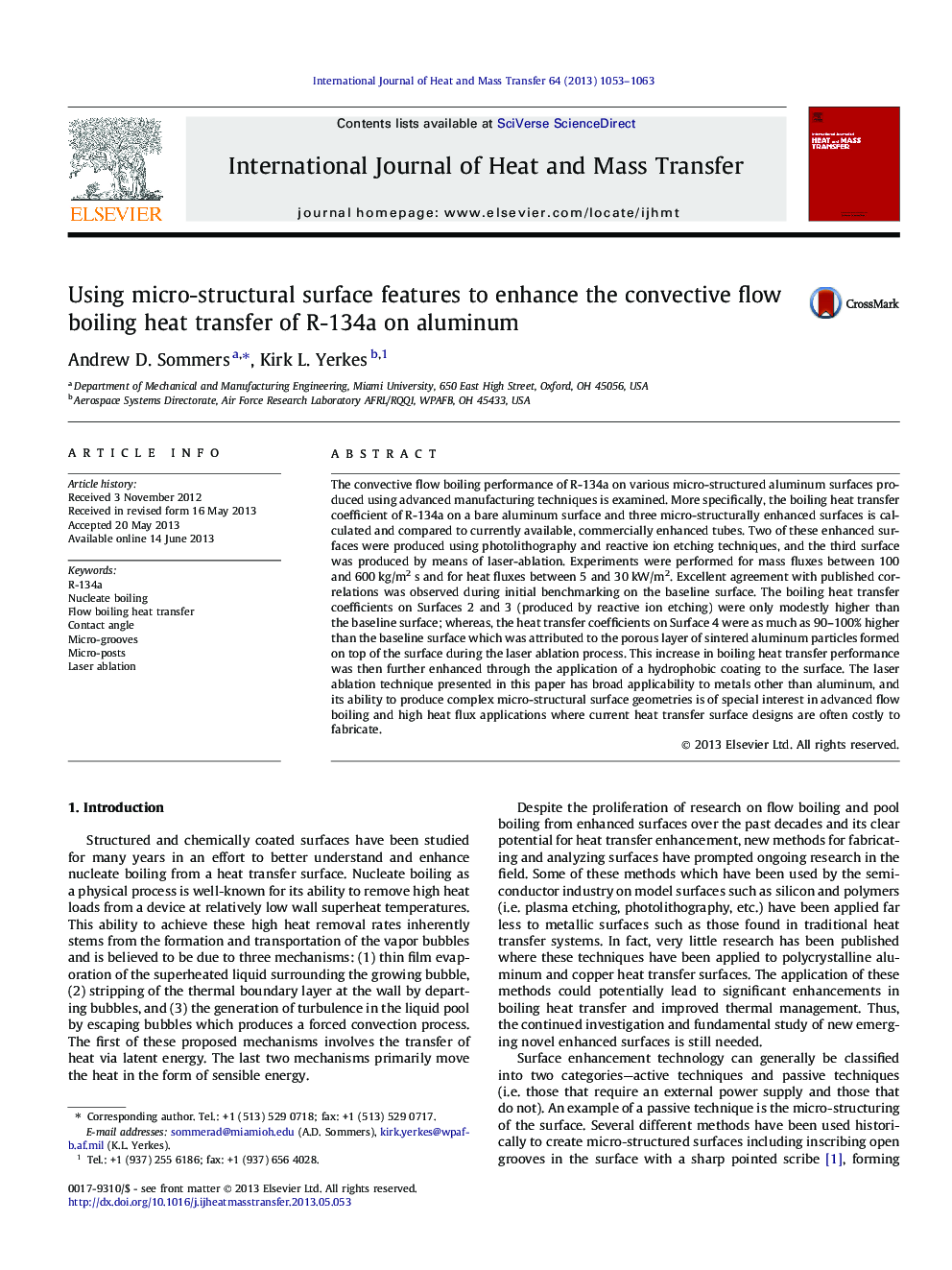| Article ID | Journal | Published Year | Pages | File Type |
|---|---|---|---|---|
| 7058883 | International Journal of Heat and Mass Transfer | 2013 | 11 Pages |
Abstract
The convective flow boiling performance of R-134a on various micro-structured aluminum surfaces produced using advanced manufacturing techniques is examined. More specifically, the boiling heat transfer coefficient of R-134a on a bare aluminum surface and three micro-structurally enhanced surfaces is calculated and compared to currently available, commercially enhanced tubes. Two of these enhanced surfaces were produced using photolithography and reactive ion etching techniques, and the third surface was produced by means of laser-ablation. Experiments were performed for mass fluxes between 100 and 600Â kg/m2Â s and for heat fluxes between 5 and 30Â kW/m2. Excellent agreement with published correlations was observed during initial benchmarking on the baseline surface. The boiling heat transfer coefficients on Surfaces 2 and 3 (produced by reactive ion etching) were only modestly higher than the baseline surface; whereas, the heat transfer coefficients on Surface 4 were as much as 90-100% higher than the baseline surface which was attributed to the porous layer of sintered aluminum particles formed on top of the surface during the laser ablation process. This increase in boiling heat transfer performance was then further enhanced through the application of a hydrophobic coating to the surface. The laser ablation technique presented in this paper has broad applicability to metals other than aluminum, and its ability to produce complex micro-structural surface geometries is of special interest in advanced flow boiling and high heat flux applications where current heat transfer surface designs are often costly to fabricate.
Related Topics
Physical Sciences and Engineering
Chemical Engineering
Fluid Flow and Transfer Processes
Authors
Andrew D. Sommers, Kirk L. Yerkes,
